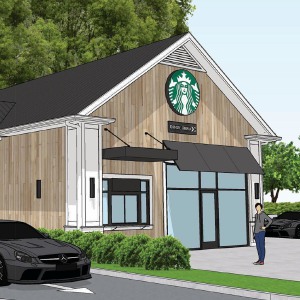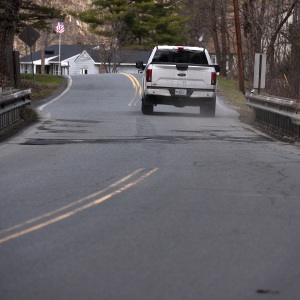Out & About: Canaan remembers 1923 fire and recovery
| Published: 05-28-2023 8:55 AM |
CANAAN VILLAGE — On the evening of June 2, 1923, after a fire had taken out most of their town center, Canaan residents gathered at the one church still standing downtown to pray.
One hundred years later, on Friday morning at 10:30 a.m., residents will once again gather at the Methodist Church to pay tribute to the two lives and the 48 buildings lost to the fire. The service — which will conclude with the bells ringing 50 times — is part of two days of events planned by Friends of Canaan Village and Canaan Historical Society to commemorate the 1923 fire.
“It’s something we’ve talked about, but digging in deep it really comes alive, how much this hurt the town and how much suffering there was,” Robin Parker, a co-organizer of the commemoration who runs Canaan Hardware, which her family has owned for 100 years. “Yet they mention in (historic documents) is that that first thing members of the town did was go to the only church that was still standing and prayed.”
Other events planned for the two-day celebration include an exhibit at the Canaan Town Library that features art Gary Hamel created from remnants of the fire titled “Putting The Pieces Back Together,” a performance by The Firehouse Dixieland Jazz Band and talks about the fire.
Visit Facebook: “Commemoration of the 1923 Canaan Fire” for a complete schedule of events.
Like other Canaan residents, Parker grew up hearing about the fire, but not necessarily the details of what took place. Dale Barney, a lifelong Canaan resident and businessman, who is one of the co-organizers of the event, heard stories about what the town looked like before and it how it was rebuilt after.
“In the Barney family we had a lot of loss on that day,” Barney said. “Nobody was injured, but they lost a lot of property and businesses.”
As he and Parker helped plan the activities, they delved deeper into that history.
Article continues after...
Yesterday's Most Read Articles
 Starbucks store planned for Route 120 at Centerra
Starbucks store planned for Route 120 at Centerra
 Enterprise: Upper Valley pet sitters discuss business growth, needs
Enterprise: Upper Valley pet sitters discuss business growth, needs
 A Life: Priscilla Sears ‘was bold enough to be very demanding’
A Life: Priscilla Sears ‘was bold enough to be very demanding’
 2024 Upper Valley high school baseball guide
2024 Upper Valley high school baseball guide
 Canaan Elementary School has new principal
Canaan Elementary School has new principal
“What I had kind of heard was that Canaan was a thriving town and growing fast with the depot coming through and was really kind of the city in the area,” said Parker, whose great-great grandfather started the hardware store after the fire. “After the fire it just took so much rebuilding that Lebanon had taken over that role in the Upper Valley from them.”
The fire started in a hay bale on School Street on the morning of June 2. The dry conditions and high winds caused the flames to quickly spread. Many buildings had wood-shingled roofs and the wind blew flaming shingles throughout downtown. Horatio Gilman and his son, Sydney, died trying to save the family shop.
“Within 20 minutes after the fire started, the Baptist Church was gone and there were several other buildings that were on fire,” town historian Donna Zani-Dunkerton said. “The whole downtown business district was gone within two hours.”
At the time, Canaan Village was known as East Village and was the town’s center of commerce, Zani-Dunkerton said.
But Canaan residents did not let the fire overwhelm them: They dipped quilts and brooms in water to beat out the flames to help the town’s fire department save buildings. That work continued even after fire departments from neighboring towns arrived.
“People got up on the roofs of these houses, they had a water brigade, they passed buckets of water and got them up to the roofs of the houses,” Zani-Dunkerton said. “A lot of these buildings were on fire several times.”
After the fire was put out, residents gathered to decide what to do next. Businesses and homes were wiped out, including railroad buildings that had been central to the town’s economy.
“They didn’t linger,” Zani-Dunkerton said. “They announced the next day that they were going to rebuild.”
Among the buildings that burned were the town’s train station and freight house. Two miles of train track had been warped by the flames, and crews replaced them the day of the fire. Telegraph lines quickly went up and rail cars were set up to be a post office, train station and freight office.
“The first year after the Canaan fire, half of the buildings had been rebuilt and several other ones were under construction,” Zani-Dunkerton said.
A group of town businessmen and residents formed a corporation called the Canaan Rehabilitation Corporation to take on the rebuild, said Andrew Cushing, president of the nonprofit organization Mascoma Valley Preservation. The group set guidelines for construction — no wood shingle roofs, for one — and decided that new structures should be built in the “colonial style.”
The train station and the freight shed, located at the end of Depot Street, were among the first to be rebuilt.
“I think it was a sign of optimism that Canaan Village would still be the economic hub of the town,” Cushing said.
The train station now is a private residence and the nonprofit organization Mascoma Valley Preservation is beginning to restore the freight shed, which is owned by the town of Canaan.
The building was used by the railroads until around the 1960s and in the decades since had been used as a storage facility. In 2017 it was put on the New Hampshire Preservation Alliance’s Seven to Save list.
“The fire was awful, but it was remarkable that the town was built back,” Judith Kushner, vice president of Mascoma Valley Preservation, who has been a leader in the effort to restore the shed, said during a tour of the freight shed.
So far, the slate roof has been repaired and sill work has been done on the exterior of the building.
Volunteers have hacked away brush and worked to clear the interior of junk. “It’s a neat structure,” Kushner said as she pointed to remnants left behind by the railroad, including signs.
Grants and private donations have funded the work so far. While the building has been stabilized, there is still a long way to go before the building can be put to use.
“Once all the work is done, we’d love to use it to incubate business,” Cushman said. “Whether that is a bike shop or whether that’s a restaurant or a bar, we want to use it in a way that keeps the momentum of downtown Canaan’s revitalization up.”
Preserving the building can also help honor the town’s history and recovery, which will be on display in full force when the 1923 fire commemoration takes place June 2 and 3.
“It just grew up of the ashes so fast,” Parker said. “I just think we need to honor how hard everybody worked to rebuild the town and how quickly they came together to be united and that is not easy when you’re suffering and hurting and broke.”
Liz Sauchelli can be reached at esauchelli@vnews.com or 603-727-3221.



 City plans to widen and replace bridge on Trues Brook Road
City plans to widen and replace bridge on Trues Brook Road
